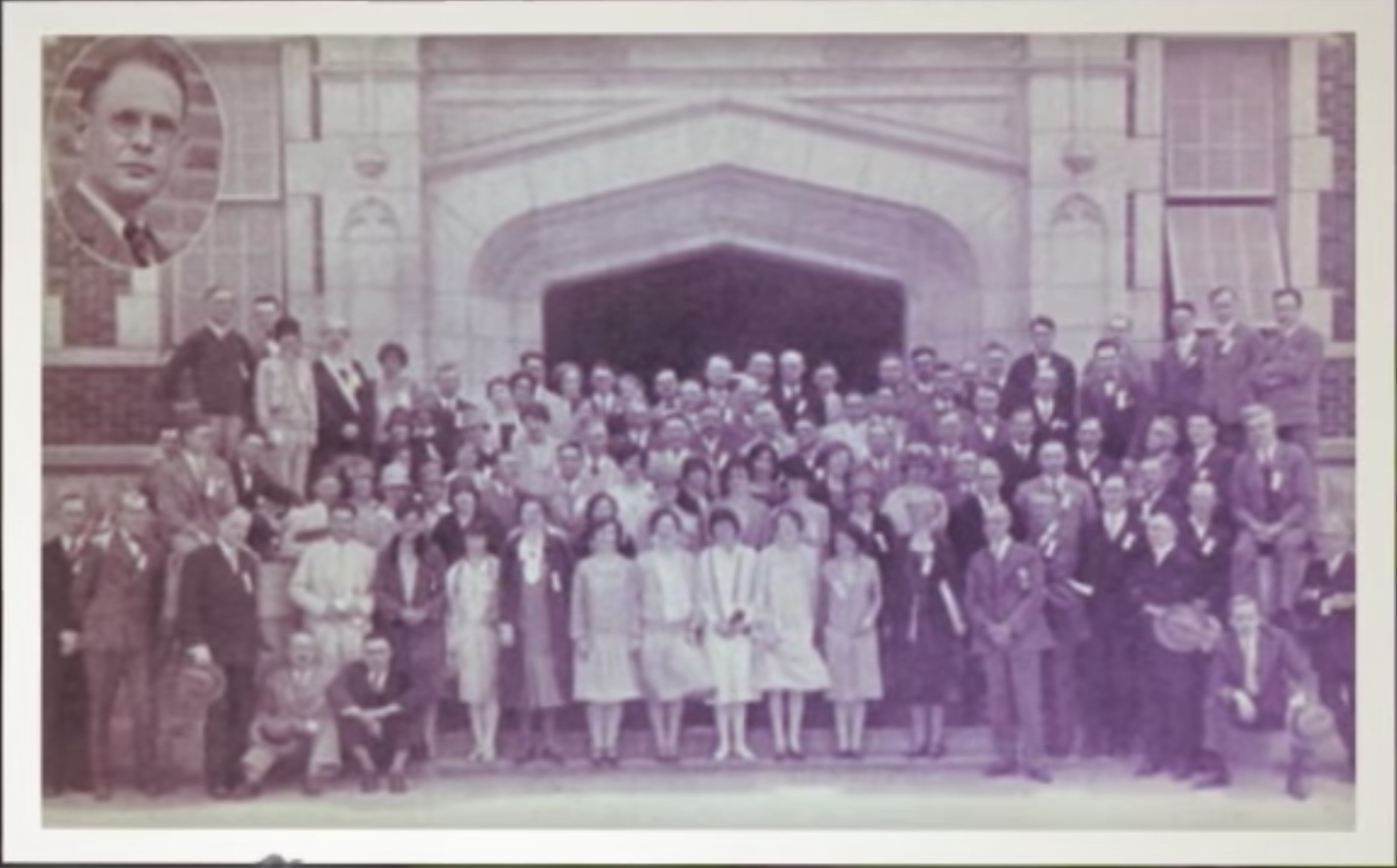Short History of CAAE
Origins
At the invitation of Ohio State Alumni Secretary, H.S., Warwick, 23 men in alumni affairs convened in Columbus, Ohio, on February 21-22, 1913, for the first organizational meeting of the Association of Alumni Secretaries, later dubbed “Columbus I.”
 First Convention of Alumni Secretaries Columbus, Ohio, February 22, 1913
First Convention of Alumni Secretaries Columbus, Ohio, February 22, 1913
By 1918, two new branches would emerge from this Association, one serving alumni magazine editors, and the other, serving alumni secretaries. In 1927, the groups joined forces to form the American Alumni Council.
 1927 Merger into American Alumni Council
1927 Merger into American Alumni Council
Fast forward to 1974, the American Alumni Council merged with the American College Public Relations Association to form the Council for the Advancement and Support of Education (CASE).
 CASE team, 1970s
CASE team, 1970s
Columbus II
In 1988, 63 of the nation’s most influential alumni executives responded to an invitation from CASE to convene for a meeting, “Columbus II,” after the first such gathering in 1913. Dan L. Heinlen, The Ohio State University Alumni Association’s director of alumni affairs, chaired Columbus II, stating it was “the largest collection of thought and opinion leaders in alumni administration today.”
The participants included managers of independent associations and alumni staff supported by college funds.Together, they “expressed a sense of having lost both power and prestige in the Balkanization of institutional advancement, of having surrendered the tasks of government relations and fund raising to their colleagues, of having become detached from the essence of the educational enterprise.”
The colloquium addressed a variety of topics that contributed to this malaise: the relationship of alumni cultivation to donor patterns, the influence of alumni on the legislative process, philosophical differences between university and alumni policy, cultural diversity in America, and lifelong learning and societal needs. The discussions were encouraging and invigorating, such that participants envisaged a Columbus III.
CASE meanwhile began to reconsider its membership model, deciding to open its programs and services to a wider variety of alumni relations executives.
Foundation of CAAE
Seeing this shift in services as drawing resources away from the independent association members of CASE, a charter membership of chief alumni officers founded the Council of Alumni Association Executives on July 8, 1989, in Washington, D.C. Its mission was “…to advocate and sustain the value of alumni association self-governance by providing the information, policies, programs, technology, and network necessary to enhance alumni administration, higher education, and professional development.”
 Washington D.C., 1989
Washington D.C., 1989
30th Anniversary
In 2019, CAAE celebrated its 30th anniversary. Although CAAE’s focus on self-governance has evolved over time, the Association’s commitment to providing its members with a knowledge exchange, peer networking and professional development opportunities continues, as does the stalwart promotion of the importance of the alumni voice.
Sources
Columbus II Colloquium: History’s Legacies and Future Strategies, A Report on the CASE Columbus II
Colloquium, February 17-19, 1988, Columbus, OH, by Donna Shoemaker, Editor, Alumni Magazine
https://www.alumniexecutives.org/documents/preview/403-columbus-ii-final-report
CAAE, Proposed Articles of Organization, February 21, 1989
https://www.alumniexecutives.org/documents/preview/406-caae-historic-documents